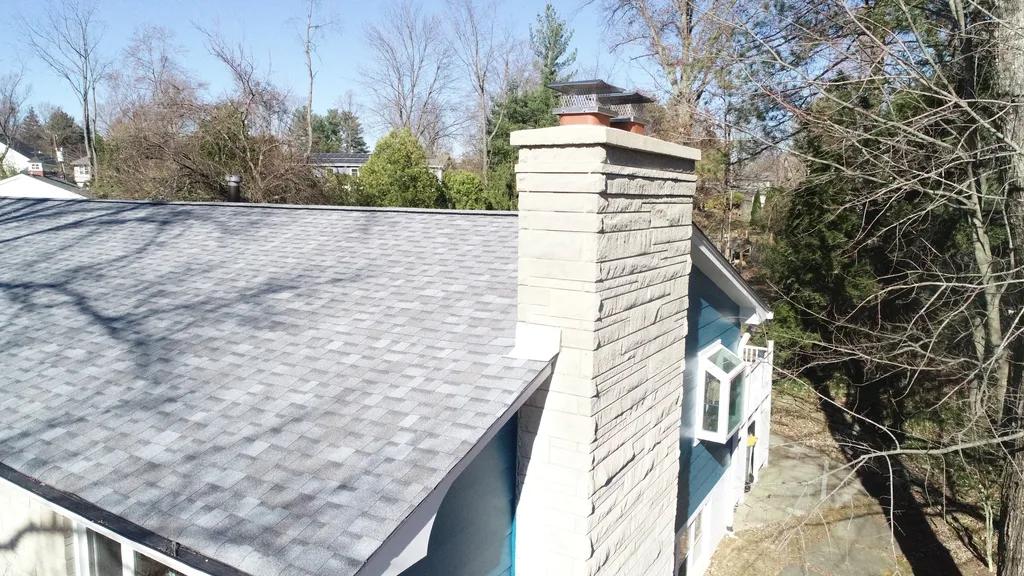Chimney chases play a crucial role in the functionality and safety of a chimney system. However, over time, these structures can deteriorate and require repairs to maintain their integrity. In this essential guide to chimney chase repair, we will explore common issues that can arise, the importance of timely maintenance, and the steps involved in repairing a chimney chase to ensure proper function and longevity. Whether you are a homeowner or a professional in the chimney industry, this article will provide valuable insights on how to effectively address chimney chase repairs.
Table of Contents
- Overview of Chimney Chase Repair Process
- Common Issues with Chimney Chases and How to Identify Them
- Materials and Tools Needed for Successful Chimney Chase Repair
- Step-by-Step Guide to Repairing a Chimney Chase
- Q&A
- Wrapping Up

Overview of Chimney Chase Repair Process
When it comes to chimney chase repair, it is important to understand the process involved to ensure the safety and functionality of your chimney. The repair process typically involves several key steps to address any issues with the chase structure and maintain the integrity of the chimney system. Here is an overview of the essential steps in the chimney chase repair process:
- Assessment: The first step in the repair process is to assess the condition of the chimney chase structure. This includes inspecting for any damage, leaks, or deterioration that may be present.
- Repairs: Once the assessment is complete, repairs can be made to address any issues found. This may include replacing damaged siding, repairing leaks, or reinforcing the structure to ensure stability.
- Sealing: After repairs are made, it is essential to properly seal the chimney chase to prevent water infiltration and protect against future damage.
- Finishing: Finally, the chimney chase can be finished with a protective coating or paint to enhance its appearance and durability.

Common Issues with Chimney Chases and How to Identify Them
Water Damage: One of the most common issues with chimney chases is water damage. This can occur due to cracks in the chase cover, missing or damaged flashing, or deteriorated brickwork. Signs of water damage include water stains on the ceiling or walls near the chimney, rust on the chimney cap, or a musty smell in your home.
Pest Infestation: Another common issue is pest infestation. Chimney chases can be a cozy home for birds, squirrels, raccoons, or other animals looking for shelter. Signs of a pest infestation include scratching or chirping sounds coming from the chimney, nesting materials near the chimney, or droppings inside the fireplace. It’s important to address pest infestations quickly to prevent damage to your chimney and potential health hazards.

Materials and Tools Needed for Successful Chimney Chase Repair
When it comes to repairing a chimney chase, it’s essential to have the right materials and tools on hand to ensure a successful outcome. One of the key materials you’ll need is **chimney chase cover**. This cover helps protect your chimney from the elements and prevents animals from entering. Additionally, you’ll need **silicone sealant** to seal any gaps and cracks in the chase. This will help prevent water damage and ensure your chimney stays in good condition.
Some of the essential tools you’ll need for chimney chase repair include a **chimney brush**, **screwdriver**, **hammer**, and **caulk gun**. These tools will help you remove any debris from the chimney, secure the chase cover in place, and seal any gaps effectively. Having the right materials and tools on hand will make the repair process much smoother and ensure your chimney is in good working condition for years to come.

Step-by-Step Guide to Repairing a Chimney Chase
Identify the Issue:
Before beginning any repairs on your chimney chase, it’s crucial to first identify the root cause of the problem. Inspect the chase for any signs of damage such as cracks, holes, or loose panels. Look for any water damage or signs of animal entry. This thorough inspection will help you determine the exact repairs needed to restore the chimney’s functionality.
Materials Needed:
- Chimney chase cover
- Caulk or sealant
- Chimney chase cap
- Stainless steel screws
- Chimney flashing
Q&A
Q: What is a chimney chase?
A: A chimney chase is a structure built around a metal chimney and is typically found on homes with prefabricated chimneys.
Q: Why does a chimney chase need repair?
A: Over time, a chimney chase can deteriorate due to weather exposure, age, and lack of maintenance, leading to issues such as leaks, rust, and structural damage.
Q: What are common signs that a chimney chase needs repair?
A: Common signs include water leaks, rust stains, mold or mildew growth, loose or missing panels, and sagging or leaning chimneys.
Q: What are the steps involved in chimney chase repair?
A: The repair process typically involves inspecting the chimney for damage, replacing any damaged components, reinforcing the structure if necessary, and sealing the chimney to prevent future damage.
Q: How can homeowners prevent chimney chase repair issues?
A: Regular inspection and maintenance, including keeping the chimney chase clean and clear of debris, can help prevent issues and prolong the life of the structure.
Q: When should a professional be called for chimney chase repair?
A: It is recommended to call a professional if you notice any signs of damage or deterioration, as they will have the expertise and tools needed to properly assess and repair the chimney chase.
Wrapping Up
In conclusion, maintaining the integrity of your chimney chase is crucial for the safety and efficiency of your home. By following the essential guide to chimney chase repair outlined in this article, you can address common issues and ensure that your chimney is in optimal condition. Remember to always consult with a professional chimney technician if you are unsure about any repairs or require assistance. Thank you for reading and we hope this guide has been helpful in keeping your chimney chase in top working order.


